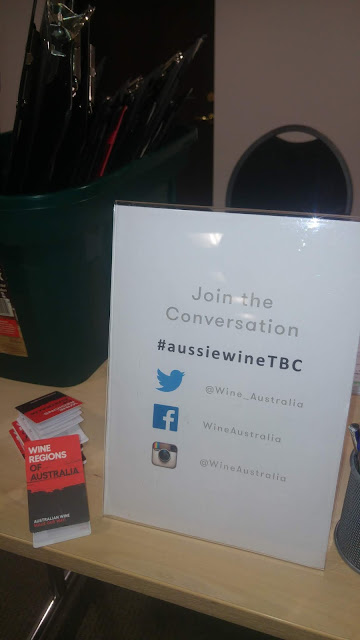Blind Tasting with Wine Australia
For me, wine has always been as much a cerebral pleasure as visceral. I still remember sitting in a restaurant on a business trip to Vienna with just a newspaper for company and experiencing my first Wachau Gruener Veltliner.
At first sip, I thought it was a good wine and carried on with whatever I was reading. By the end of the second glass, I had put down my paper and instinctively started to assess and interrogate it, to consider and reflect.
It was the start of a journey in which wine would be something not merely to be consumed but more akin to entering a conversation.
Of course, there's quaffing plonk and plenty of basic wines that are thoroughly enjoyable but not memorable. These wines have little to say and what they do utter is at best bland small talk.
But beyond this, wine is a more cerebral experience, with tension, contrast, nuance and complexity. Like architecture, it has a structure; like painting it has depth; like sculpture, it has physical form. At this level, wine has a personality, it transcends mere entertainment to become art, conveying emotions and making a statement.
I don't especially enjoy the wine geeks' parlour game of blind tasting, just as I don't enjoy crosswords or accountancy exams; it's too much like the homework after the lesson and wine is after all not my job.
But an opportunity on a quiet Monday night to taste a dozen wines blind at The Australia Centre was something different.
The organisers had enough of a sense of fun to make the questions more interesting than merely name the grape and region, and whilst we were invited to identify these, there were also questions about blends vs varietal, spotting the oldest wine in a flight and one ringer, a non-Aussie wine.
Flight #1 whites
I suspected this to be Semillon pretty much from the first sniff; it it has a characteristic toasty, dieselly nose and zippy limey acidity.
Arriving late to the party, the first wine I tried was low in acidity - for a Semillon; with hindsight, it had clearly been out a while. When it was replaced with a fresh bottle at the right temperature, the flavour profile was much more typical and it was an easier spot.
The ringer in the group was a South African Semillon from Ghost Corner, available at Waitrose. Whilst Australian Semillon, especially Hunter Valley, is A Thing, Saffer Semillon is a new one on me.
Flight #2 reds
Pale in the glass, cherry fruited and undergrowthy, I had these down as Pinots from the off. One wine was a brick red colour with dried out rosehip fruit and I concluded it was just past its peak.
More fool me; these were Nebbiolos and Sangiovese blends (yes, Australian Sangiovese - and not even my first encounter with this phenomenon).
Oh, and my "past-peak" wine was a Nebbiolo that was just going through a dumb phase and which, a fellow taster assured me, would open up again in a few more years.
Flight #3 reds
With ruby colour, spice and mintiness, fine tannins and some florality I was thinking Grenache for these and with one exception, they were all varietal Grenaches.
The Kalleske Old Vine Grenache 2015 from this flight was perhaps the best wine on show of the evening; and yet, unlike other ambitious Aussie wines I have tasted before, it was not merely a pumped-up, pimped-up version of a standard wine. Rather it was more delicate, subtle and nuanced, something that only fully revealed itself on subsequent assessment.
Afterthoughts
Australia and Australian wine is clearly on a journey; that much was very obvious. It has done the "sunshine in a glass thing" and it has had the anti-warm-climate / steely white backlash phase; it has done the dumbed-down bulk wine thing and Big-Ass Trophy Wine. It has done the New Old World Burgundian thing and the New New World Western Australia thing.
Where Australia seems most exciting right now is in the sweet spot between everyday quaffers and over-priced, overambitious garagiste / Trophy Wines; wines mostly from independent merchants and mostly priced in the teens. These are wines with elegance and complexity, precision and structure; they show a European sophistication with an antipodean accent.
This is where the future of Australian wine lies, I believe - in business, the middle ground is the always hardest place to be and you can really only compete on price or quality.
A drive for better quality supported by sustainable pricing will benefit both Australian wine, by making it a more profitable sector, and also consumers, by offering a greater choice of well-made, elegant wines. More choice and more competition make everybody's world a more interesting place.
Subscribe to:
Post Comments (Atom)










No comments:
Post a Comment